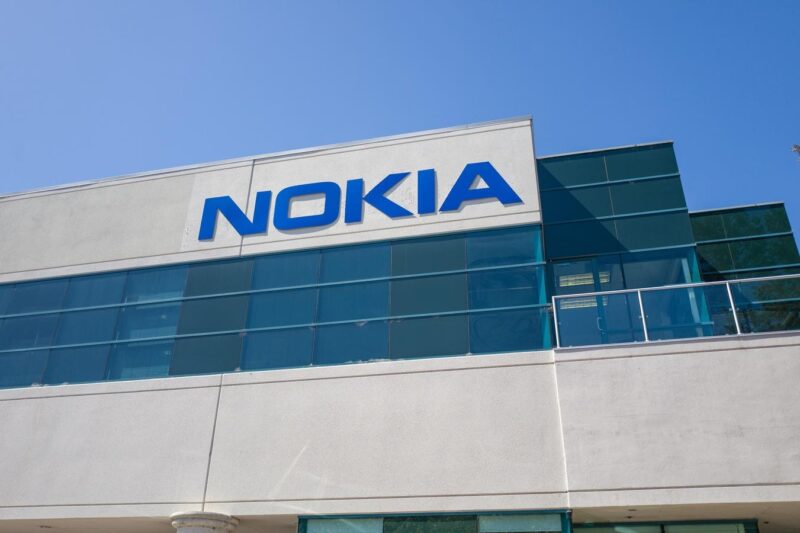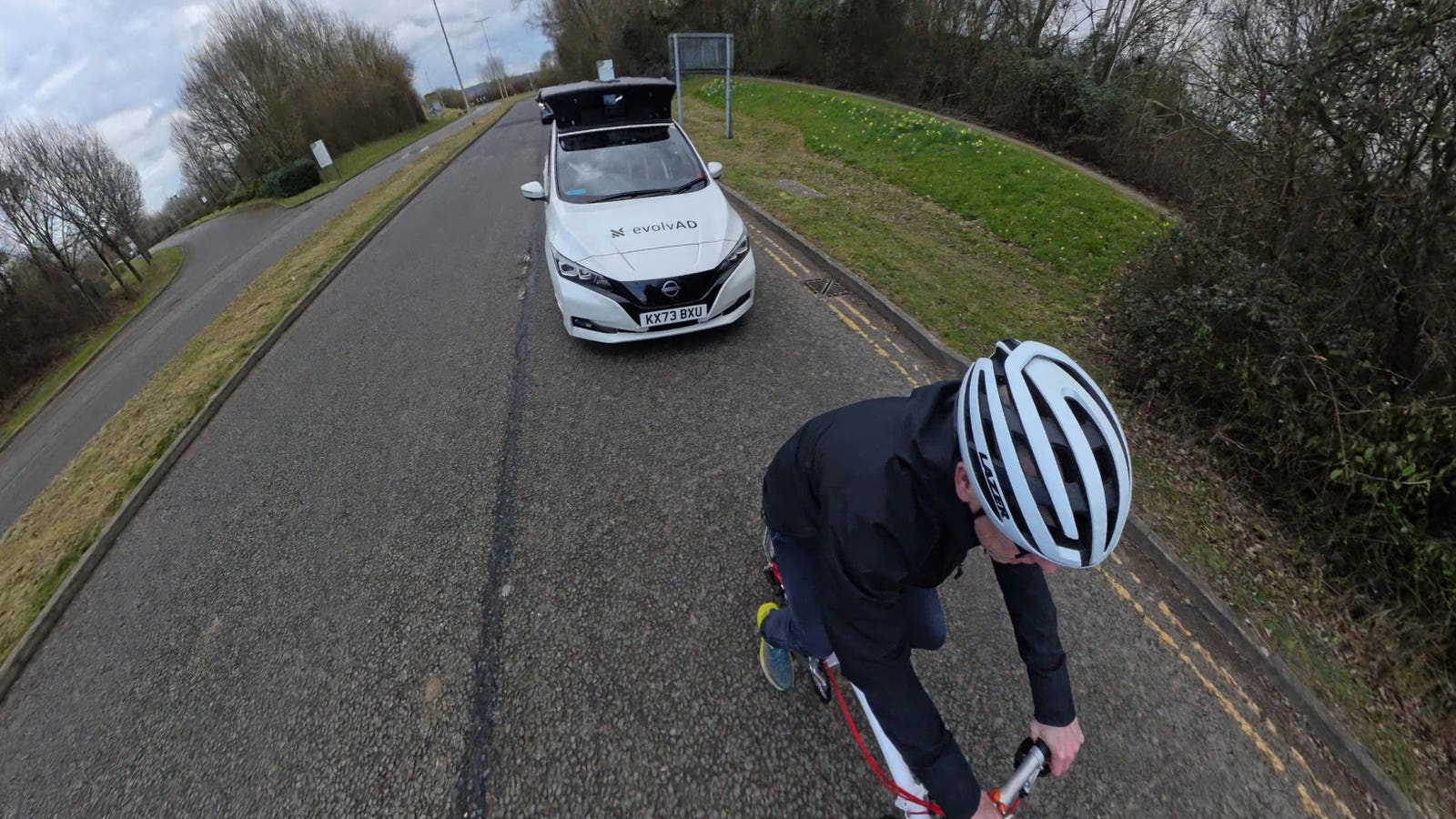It sounds like a cliché, but I was recently asked about Nokia on the golf course. I had returned from a Nokia-sponsored analyst conference at the swank Biltmore Hotel in Phoenix, and a friend of mine was curious about what they were up to.
“Are they still doing phones?” asked the friend, who is a retired wealth advisor. This might be a question that most people would ask, unaware that the company has been in the process of a long effort to diversify from telecom infrastructure.
Nokia does, in fact, still sell phones. But it now has new growth in the best neighborhood: AI infrastructure. In its quarterly earnings announced early today in Europe, the Finnish company reported results reflecting 9% overall revenue growth and big gains in its renewed strategic focus on datacenter networking and AI infrastructure.
Big Growth in Cloud
As proven by its recent earnings, Nokia has shown it can grow in new markets, including AI. Investors love that. Nokia’s stock vaulted 10% in U.S.-based trading today following the results.
Nokia reported third-quarter profit ahead of market expectations on Thursday, driven by strong optical and cloud demand. This included growth in AI-focused datacenter sales following its acquisition of optical networking specialist Infinera.
In announcing its results, Nokia management said artificial intelligence and cloud customers accounted for 6% of group net sales and 14% of network infrastructure sales, with optical networks up 19%.
Some key takeaways:
- Revenue increased 9% year-over-year (y/y).
- Nokia beat EPS expectations by 21%.
- Management said new partnerships and product launches are driving growth.
How Lundmark Left His Mark
With the news, Nokia shows that the turnaround architected by former Nokia CEO Pekka Lundmark is bearing fruit. Lundmark, frustrated by years of sluggish growth in telecom, saw the need to diversify by boosting products geared toward datacenter infrastructure. This also included a large acquisition of optical networking company Infinera for $2.3 billion, which was announced in 2024 and completed this year.
In the quarter, the company showed impressive growth of 11% in network infrastructure, growing to €1.95 billion ($2.26 billion US). Cloud and Network Services surprised the street with sales of €645 million ($750 million US), 17% above estimates, according to Raymond James. Nokia now expects annual operating profit between 1.7 billion and 2.2 billion euros, a slight upgrade to the previous range of up to 2.1 billion.
Lundmark’s turnaround plan, which was described by himself as very difficult, now appears to be prescient. The company is finally emerging from under the long dark cloud of telecom, where for years it was weighed down by disappointing returns in the 5G infrastructure investment cycle.
Technology company Nokia’s newly appointed President and Chief Executive Officer of Nokia, Justin Hotard attends at the company’s press conference in Espoo, Finland on February 10, 2025. Nokia today announced a leadership transition. Nokia’s President and Chief Executive Officer, Pekka Lundmark, has informed the Board that he will step down. The Board has appointed Justin Hotard as the next President and Chief Executive Officer of Nokia. He will start in his new role on 1 April 2025. (Photo by Markku Ulander / Lehtikuva / AFP) / Finland OUT (Photo by MARKKU ULANDER/Lehtikuva/AFP via Getty Images)
Lehtikuva/AFP via Getty Images
This year, ahead of the industry’s big Mobile World Congress trade conference in Barcelona, Lundmark handed the reigns over to an American, Justin Hotard, who brings a background in datacenter and enterprise. Hotard held previous executive roles at Intel, Hewlett Packard Enterprise, and NCR Corporation.
“We have seen some improvements in CSP [communications service provider] expectations, along with the strong order intake I mentioned in AI and cloud,” said Hotard on the company earnings conference call. “In fact, entering the fourth quarter, our backlog coverage is stronger than in recent years. We’re also pleased with our progress on the Infinera acquisition.”
It’s possible that the telecom frustration was a blessing in disguise. Now, Nokia can sail into the land of rainbows and unicorns: AI. Nokia has now shown proof that a successful pivot is underway and it is now well-positioned with datacenter networking products, including its high-performance SR Linux-powered routing and switch portfolio as well as the Infinera optical products.
Hyperscaler and Neocloud Customers
At the recent analyst even in Arizona, Nokia highlighted customers and potential wins in AI infrastructure, including GPU clouds. That area has already been anchored by a deal with recent IPO CoreWeave. But some analysts say that bigger game may be in the mix, including Meta and Google.
“We believe Nokia shares a new Meta optical scale-across project with Ciena, and the optical book-to-bill again meaningfully exceeded 1x,” Raymond James analysts Simon Leopold wrote in a research note. “IP traction is emerging with footholds with Microsoft, Google, and CoreWeave, and a new deal with Nscale.”
Many Wall St. analysts rushed to bump up their estimates on the news. Raymond James and Deutsche Bank both lifted their price estimates for Nokia, with Raymond James raising its target to $6.50 from $5 and Deutsche Bank going from €4.75 to €4.25 on European exchanges.
Futuriom has been highlighting Nokia’s potential success with AI-focused clients like CoreWeave. Nokia’s flexible, open-source SR Linux operating system has been a key differentiator, with customers citing its simplicity, reliability, and economics. Nokia’s solution provided high performance while also demonstrating significant energy efficiency, a critical factor for large-scale AI networking infrastructure.
This quarter may well represent the start of a new era for Nokia, as it has boosted its reputation as major supplier of networking infrastructure for data centers and AI.
Futuriom provides paid research and marketing services to technology companies, including Nokia, with the goal of providing accurate insight into how cloud and AI infrastructure markets are evolving. These services include subscription research, custom research, and report sponsorships. The author holds no positions in individual technology stocks mentioned in this article.









